The Russian intervention in Syria was discussed as an attempt to re-consider Moscow as a dominant force in the Middle East and to break the bone of the United States and its European allies. Analysts stated that the Western camp managed to drag “the bear” into the Syrian quagmire.
However, over the past two years, this intervention has been manifested into more than two years of interests and gains that were equal to the costs of the war. It has been revealed that Putin has confidently gone through a comprehensive political, military, economic, and social plan that firmly established the position of Russians in the Mediterranean eastern landscape.
The eastern axis and his leader Putin did not appreciate the freedom uprising and insurgency. Therefore, he turned Syria into a testing ground for his weapons, leaving behind thousands of victims, rubble, and blood.
The Russian intervention was not for free. The Syrian regime’s president, Bashar al-Assad, pays day by day the bill for his establishment from Syria’s treasury, wealth, and its youth.
Russia Shifts Power Balance in Al-Assad’s Favour
On September 30th 2015, the Russian Federation Council gave Vladimir Putin’s administration the permission to use military air forces abroad, including Syria. Thus, since that time, Russian fighting jets started its raids on most of the Syrian areas which did not belong to regime-held areas.
The Syrian regime stated that the Russian air forces were sent to Syria as a response to the Syrian state’s request, proposed through a letter from al-Assad to Putin, which includes an invitation to send Russian air forces.
The Russian intervention drew a new map of the Syrian regime’s influence and its allies after three years of the withdrawal of al-Assad forces against opposition factions in key provinces.
Air cover was the Russian intervention trump card. It contributed to the shift of al-Assad position from retreat to attack, along with a large military arsenal that included 162 weapons models tested by the Russian Defence Ministry, which turned Syria into a military “testing ground”.
Hinge Change in Aleppo
Before the Russian intervention, the Syrian regime presence in the province of Aleppo was only limited to the western neighbourhoods as well as the provinces in eastern and southern districts, especially from as-Safira area to Khanasir road, for it’s the regime’s only supply point toward the centre of the province.
The Syrian opposition had been omnipresent in the rural areas. It had also control over the eastern neighbourhoods of the city and a tightened grip on the second most important Syrian-Turkish land crossings such as Bab al-Salama border crossing, which forms along with Bab al-Hawa, the main lifeline of the northern cities.
October 2015 represented the zero hour for al-Assad forces operations supported by the Russians in the province of Aleppo, where they launched an attack on the southern and eastern axes, taking advantage of series of circumstances which gave them an unprecedented impetus, and drove them to Quiris to the east, and the international motorway to the south.
Through this attack, the forces have been able to break the province’s northern opposition-held areas into two, after controlling several of strategic towns and villages, most notably Tell Jabin, Dweir al-Zaytun, Ratyan, Hardatnein, Mayer, Musqan, Ahras and others in order to reach the neighbouring towns of Nubl and al-Zahraa.
The last months of 2016 represented the pivotal point in Aleppo’s history as al-Assad’s forces and its supporting militias were able to fully control the eastern neighbourhoods of the city, after battles that had witnessed attacks and retreats for months.
Russian planes played a major role in the coverage of al-Assad’s advance. Russia has deployed Russian military teams, which provided regime’s officers with military consultations about dismantling mines and booby-trapped buildings during their progress in the region.
After the regime has subjected the entire city to its control, al-Assad’s forces moved to the eastern part of the city, in conjunction with the expansion of the Free Army’s influence in northern and eastern Aleppo countryside with Turkish support.
Al-Assad forces took control of Aleppo’s entire eastern countryside from ISIS thanks to the main participation of the Russian warplanes. Al-Assad forces had also reached Raqqa southern countryside and took full control over it, reaching Deir ez-Zor.
Central Syria is ISIS-free
The province of Homs, where ISIS has dominated large areas of eastern countryside, has the organization’s most prominent points such as Palmyra city and its surrounding oil fields reaching T4 military airport and al-Qaryatayn city.
Russian support in Homs Front was the largest in comparison to other provinces. Moscow engaged Ka-52 Alligator into fire-coverage and deployed units of Russian soldiers along with demining teams responsible for mines previously planted by ISIS.
If we consider the map of control after the Russian intervention, we will find that there is a great movement of al-Assad forces in the central area, as they took control of the city of Palmyra and its surrounding areas, despite ISIS hit-and-run attacks. It has also taken control of the southern countryside of Homs until the Syrian Desert, where it has made great progress and is currently trying to control the entire Syrian border with Jordan.
The situation in the eastern countryside of Homs is not much different from that of Hama, as al-Assad forces and their supporting militias have restored control over the entire eastern countryside of Hama, months after ISIS seized control of it and linked it to its held areas in Deir ez-Zor and Raqqa.
The long-range Kalibr missile, coming from the Russian battleships in the Mediterranean, has played a major role in precisely targeting casualties in the region and ISIS to retreat.
The Russian Ministry of Defence stated that the number of combat flights carried out by Russian aviation in the Hama countryside from the beginning of August 2017 until the end of September, has reached around 990 sorties with 2518 strikes.
Russia tested 162 weapons on Syrian territory since its first intervention with the Syrian regime on September 30th 2015, according to a report published by Russian media.
According to a report published by Sputnik on October the 1st “the Russian armed forces mission has become Syria’s biggest abroad. Thanks to it and within two years, Damascus managed to liberate 90 percent of its territory and Russia has been able to test the latest 162 devices.”
“Since 2015, SU-24 bomber and SU-25 attack aircraft have been carrying out their missions, and in 2016 SU-35, which is the updated version of SU-27, has been deployed at Hmeimim base” according to the same report.
In June 2017, SU27-M3 and the latest medium-range and air-to-air missiles have been introduced to the head of the Syrian regime.
Control over the Syrian east is totally Russian
The battles described as “the last” in ISIS accounts in Syria and the confrontations that are currently taking place in the province of Deir ez-Zor are Russian par excellence.
Four years after ISIS control of the province, al-Assad’s forces and militias have made considerable progress at the expense of the organization and recovered all the areas that the regime had lost in the past years, the most important of which is the 137th Brigade and the area that connects it to the military airport to the south as well as neighbourhoods located deep into the city such as Saker island.
Al-Assad forces and militias reached the eastern bank of the Euphrates River, thanks to Russian support, which included at this stage sophisticated military vehicles’, and a water bridge that enabled al-Assad’s soldiers and Russian forces to cross the river.
The role of the Russian aircraft cannot be ignored, and according to Enab Baladi sources in the region, more than 50 air strikes occur every day.
Thus, al-Assad’s sphere of influence expanded in the eastern region of Syria and connected with al-Assad’s held areas in Raqqa and Aleppo countryside, along with Homs and Hama villages.
Limited change in the map of the South
Al-Shaykh Maskin city is located 22 km away north from Daraa city. It is the fourth largest city in the province, after Daraa, Nawa and al-Sanamayn, with a population of around 50 thousand people before it got engaged into battles in 2014.
Al-Shaykh Maskin represents a link between three governorates Damascus, Daraa and al-Suwayda, and a point of contact between the cities of Nawa, Izra, Abtaa, Da’el and al-Sanamayn. It is situated in the middle of Hauran plain and this is what made it a target for the free army that took control over it on December 2014.
Unlike other provinces, Daraa witnessed a limited change in favour of al-Assad’s forces after the Russian intervention.
On December 25th 2015, al-Assad’s forces launched a major military campaign against the city of al-Shaykh Maskin in northern Daraa countryside and succeeded to take control over it after fierce battles and confrontations, which were finally concluded by Russian air forces.
Atman, the northern gate of the city of Daraa has been a Free Army held area in the first years of the Syrian revolution. It was the second target of al-Assad’s forces in Daraa. They imposed full control over it within three days in a battle that began in early February 2016.
The opposition is receded in the coast
During the early years of the revolution, the opposition factions have succeeded in maintaining their areas of concentration in north of Lattakia. They have taken control over most of the towns and hills of the Kurd and Turkmen mountains. Their communities were relatively stable during that period, despite the unsuccessful repetitive storming attempts.
In October 2015, the Syrian regime and its allies launched an attack against the opposition areas in the province from several axes. Within four months, it managed to achieve an unprecedented progress, during which, it took control over strategic towns and hills. The most important of which were Salma, Kinsabba, and Mrouniyat in the Kurd Mountains as well asRabia, Ghmam, and Zahia in the Turkmen.
According to the field control map, the Syrian opposition was left with only a few villages on the borderline with Turkey in the Turkmen Mountain, such as Yunesiyeh, Zaytuneh, Sharorah, and Sallour.
In the meantime, the Kurd Mountains have become mostly under the control of the Syrian regime, next to the western countryside of Idlib Governorate.
Russia from the “Veto” to taking over the political file
Over two years of intervention in Syria, Moscow sought to weaken the opposition forces under the pretext of “fighting terrorism” and succeeded in achieving part of its political interests while trying to form an opposition that suits and meets its interests.
Since 2011, the Veto of Vitaly Churkin, Russia’s former permanent representative to the United Nations, has contributed to the suspension of five projects to condemn Assad’s regime, voted by the Security Council, the most recent of which was in November 2016, alongside with strengthening the chances of Russia being the upper hand in Syria, and its infiltration within the political decision-making circles of the regime and its military establishment.
Vitaly joined his deputy Vladimir Safronkov, who used the Veto again in February 2017 against sanctions against Syrian regime officials, and then in April 2017 against a draft resolution on the use of chemical weapons following the Khan Shaykhun massacre.
Russia has imposed itself as the godfather of a political solution to the Syrian issue by sponsoring the Astana Peace Talks alongside with Turkey and Iran as well as playing a role at the Geneva peace talks on Syria, through platforms that described themselves as “the opposition”.
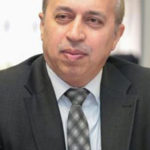
Ahmad Ramadan, a member of the Political Bureau in the National Coalition for Syrian Revolutionary and Opposition Forces.
Ahmad Ramadan, Member of the Political Bureau in the National Coalition for Syrian Revolutionary and Opposition Forces, told Enab Baladi that it was clear from the beginning that the Russian intervention was not based on the pretexts it had provided to the international community, which are “fighting terrorism”.
He considered that Moscow had “intentionally avoided clashes with any terrorist case in Syria. It rather worked on weakening the opposing side to the regime, including the public community or Al-Jaysh Al-Hurr.” He also pointed out that Moscow “had developed a strategy to displace the largest opposition population from the Syrian Coast, up to the centre and then to the north and to push them out to become today a Russian control area.”
Russia’s attempts, which coincided with the efforts of other countries to impose a solution in Syria, were different from those of its fellow countries and relations with the United States over the Syrian file have always been strained.
Ramadan believes that the Russians sought to impose their vision of a solution that is based on restructuring the Syrian state according to their interests and power, and restructuring the society by moving the entire demographic blocs.
Some of the opponents described the Russian intervention as a sense of “occupation.” The National Coalition member adhered to this idea, explaining that, “the Russians hired a Russian adviser in each of the regime’s ministries. Any statement, position, or action is issued by only referring back to him; this is what the mandate authorities are doing.
Russia has also taken control of the army’s joints and linked all the military and air forces to the Hmeimim Air Base, and so, its Ministry of Defence became the leader of all military operations, in a clear cooperation with Iranian forces.
The Syrian politician’s opinion has been supported by the issue of the delay or lack of Syrian ministers’ statement, until Moscow starts to develop its political plans. Activists often make fun of the fact that Moscow has become the regime’s foreign ministry, as happened in the position towards self-governance in north eastern Syria. On September 26th 2017, the Minister of Foreign Affairs, Walid Muallem, showed up to express his willingness to negotiate and discuss the establishment of a self-governance regime for the Kurds in Syria, in condition that it would be established within the state’s borders, which was absolutely rejected by the regime.
Ramadan considered this shift as a message from the Russians to the YPG that “the discussion can be held without considering the regime’s approval.”
Despite showing “goodwill” and seeking a political solution, Moscow is clearly still imposing its agendas on more than one level. However, according to the opposition member, “until today, Russia has not been able to impose whatever it wants in Astana and Geneva.” He explained that “it is not able to turn Syria into Grozny or one of the Caucasus states that it used to occupy.”
In Ramadan’s conception, “the resistance against Russia will develop more in time. Here, we will find out that it would look for a solution in one way or another.”
In a poll of more than 800 observers, 78 percent of them said that Russia could not play a “neutral” role in finding a political solution, while 22 percent of the voters supported its role in the negotiations.
The Russians are chaining Syria and drowning it in debt
Russia has drawn up a map of military bases in Syria that is re-establishing its presence as a central force in the Middle East. However, there is an economic agenda that Moscow is hiding behind its military and political presence, the most important of which is obtaining long-term economic advantages through signing agreements with the Syrian regime, as a way to return its favour in contributing to keeping the Syrian regime and its president, Bashar al-Assad.
The economic relations between Damascus and Moscow are not the result of military intervention, but they date back to the Soviet Union and the rule of former President Hafez al-Assad in the 1990s. In addition, the son Bashar al-Assad has worked on strengthening more trade and economic relations between the two countries. In 2005, he signed about 43 agreements, in the fields of industry, trade, defence, healthcare, energy, and irrigation.
According to analysts, the regime’s concessions and signing agreements with Moscow is not new. Russia has cancelled 73% of its debts from Syria ($ 9.8 billion of the total debt of $ 13.4 billion), during Assad’s visit to Moscow in 2005, in exchange for turning the Tartus Port into a permanent military base for Russian ships.
However, the concessions have increased after the outbreak of the revolution, after Assad resorted to Putin to maintain his regime. By that time, Russia has started taking advantage of its position by signing the 2013 “Amrit contract which is an unprecedented huge agreement with a Russian company, for oil and gas exploration in the Syrian territorial waters.
It is a 25-year contract which includes the exploration of 2190 square kilometres at a cost of $ 100 million, funded by Russia. If oil or gas is discovered in commercial quantities, Moscow will recover the costs from the production revenues, according to what the Director-General of the General Petroleum Corporation of the regime’s government, Ali Abbas, claimed to AFP.
After the Russian military intervention, the two sides have signed agreements in various fields, including two agreements worth 600 and 250 million Euros, in 2016, in order to repair the infrastructure that has been destroyed by the “battle”, as well as the construction of power stations and grain silos. Thus “the Syrian market has become open to Russian companies which can be present, join, and play an important role in the reconstruction and investment in Syria,” according to Syrian President Bashar al-Assad, in an interview with Sputnik Russian news agency in April.
On June 29, the Russian Fontanka Electronic Network published a memorandum of cooperation which Europolis Russian Company signed with the Syrian Ministry of Oil and Mineral Recourses earlier this year. The memorandum states that the company is commited to “liberate and protect areas that contain oil wells and facilities,” in return of getting one quarter of oil production.
Since early June, a Russian company, owned by billionaire Gennady Timchenko, has been carrying out maintenance work for the largest phosphate mines in Syria, located in Khunayfis region near the city of Palmyra, according to a report published by Russia Today websiteon June 27.
Russia Today article confirmed that al-Assad signed the agreement on April 23. The agreement was between the General Organization for Geology and Mineral Resources of Syria and STNG Logestic, a subsidiary of Story Trans Gas, which owns 31% of the company. This agreement was aimed at implementing the maintenance needed and providing protection, production, and transport services to Selaata port in Lebanon.
Moreover, Russia intervened in the field of Syrian food and became the country with the most exports of wheat, which is considered as a strategic product. Internal Trade and Consumer Protection Minister, Abdullah al-Gharbi, announced an agreement to buy three million tons of wheat from Russia in September.
Moreover, Russian company, SovEcon, will build four grain mills in Homs at a cost of 70 million Euros. The Syrian government will be the one covering the construction costs, according to what Ziad Balla, Director General of General Mills Company, said in April 2016. Ziad also talked about a cooperative work with the Iranian side is done in order to build and prepare five mills in many provinces.
Economist Munaff Kuman asserted that the contracts and agreements between Russia and Syria will have devastating effects on the Syrian economy on the long run, as it will tie up the economy and the future Syrian government and will prevent it from taking any developmental steps that may lead to the autonomy of national decision and the ability to invest Syria’s natural resources.
Kuman also asserted that “any development process will collide with Russia and Iran, which will prevent the whole process”. (Tehran also signed several agreements with the regime)
The researcher stressed the seriousness of contracts relating to the exploitation of oil ports and the right to prospect for oil and gas and phosphate and extract it, because it will be stolen for the benefit of Russia and Iran. The two countries will work on “sucking the wealth” without taking into account any national interests of the Syrians. Russian companies may also sell oil, gas, and phosphate extracted from Syrian territory at high prices, and this will have negative effects on the government and the citizen in terms of costs and prices in the local market.
A Russian culture puts its mark in a “conservative society”
In addition to the military and economic dominance that it imposed on Syrian soil, Russia managed, after two years of intervening in Syria, to spread its local culture within Syrian society, with the blessing of the Syrian regime, which considered the dissemination of Russian culture as the least possible to do so as to express appreciation of Moscow efforts.
Russian language in schools and universities
At a time when Russian forces were cracking down on cities and villages beyond the control of the regime, the Education Ministry of the al-Assad government was busy preparing curricula for teaching Russian in schools and for opening a Russian language branch at the Faculty of Arts at the University of Damascus.
At the end of last year, Minister of Education Hazwan al-Waz announced that the ministry had developed a plan to develop the Russian language in its schools, which has gradually begun to be included in schools since the beginning of the academic year 2015-2016, in the preparatory stage.
In November 2014, the Syrian Ministry of Education opened a department of Russian language and literature at the Faculty of Arts and Humanities at the University of Damascus.
As for the Syrian students’ demand for the new language, Al-Waz said that 59 schools were studying Russian in 2015. In 2016, the number increased to reach 105 schools.
The ministry appointed Syrian teachers with university degrees or higher degrees in Russian literature from a republic of the former Soviet Union or from the Russian Federation to teach Syrian students the new language.
The Russian women who hold Syrian citizenship and hold the same certificates have also been employed. The number of Russian teachers in 2016 reached 60, according to official statistics.
Cultural intrusion was not limited to teaching Russian, but was accompanied with images of Russian President Vladimir Putin in schools, streets, and official celebrations. One of the most striking images of this cultural breakthrough was the opening of the “Martyr Ahmed Abu Nabout” school in Daraa last September, when the students carried pictures of Putin and the Russian flag alongside Assad’s pictures.
Two years ago, Putin’s pictures started competing with Assad’s image put on the cars of the loyalist, known as the Shabiha.
Coastal restaurants prepared for Russian customers
The Russian-established Hmeimim air-base in Latakia allowed its soldiers to be among the Syrian citizens in the coastal region. Thus, they became the focus of restaurants and shops that host Russian clients and seek to attract them.
The café and restaurant named “Moscow” which was inaugurated in Latakia is the best example of restaurant owners’ investment for Russian soldiers of the air base.
Tariq Shabu, the restaurant owner told Russia Today, after the opening that he hopes to attract the newly arrived Russians to Syria, adding that he had begun learning Russian to provide the menu in their own language in the near future.
Some of the Syrian restaurants in the coastal areas have also set up lists of food, beverages and prices in Russian to facilitate dealing with the new customer.
The pro-Assad Syrians often deal with the Russians as loyal friends who have supported the state for 45 years and finally come to their rescue. These citizens have begun to learn the language of the Russians as a kind of luxury and a “debt response” to the Russian ally.
Reverse integration, Russians drinking mate
At a time when the Syrians are struggling to integrate into the communities they have resorted to because of the war between the different conflict parties, most notably the Russian one, a reverse integration began to emerge in Syrian society when Russian fighters in Syria tried to get rid of the burden of war by holding a normal life among civilians.
Some of them drank mate and other ate shawarma. A video published on October 4 showed Russian soldiers dancing in front of Aleppo citadel along with Syrian citizens on the Syrian folklore song, “al-Laymouni”.
In 2015, the Iranian channel Al-Alam published pictures of a Russian soldier drinking “mate”, a popular drink in Syrian coastal areas.
A video of a Russian soldier was also broadcast on YouTube as he was drinking in the honour of “Abu Ali Putin” and Bashar al-Assad, as Syrian soldiers were teaching him.
Thus, some Russian soldiers built friendly relations with Syrian citizens and with al-Assad’s soldiers shortly after the Russian intervention in Syria as long as the shared goal was “to eliminate terrorism.”
Russia which does not stop killing
Despite attempts to prevail over the political role on the military, Russia was unable to prove its good intentions in Syria during the past year as it continued to support the Syrian regime militarily. Moreover, its rockets were a direct cause of the death of thousands, and the displacement policies under the terms of (national reconciliation) lead to displacing thousands of other civilians from their homes.
Several human rights reports have tried to translate what Russia is doing in Syria and have monitored serious human rights violations since the Russian intervention began officially two years ago, even after the end of the Russian campaign against Syria last year.
This is why the human rights organizations are pushing the UN Member States to remove Russia from the Human Rights Council, and this is what actually happened on October 28th 2016, when Russia lost its seat in the UN Council after failing to mobilize enough supporters.
Dead counter is still working
The Syrian Network for Human Rights confirmed in its report of 2nd October 2017 that Russia has killed 5233 civilians, including 1417 children in 2017 and 886 since the start of its military intervention in Syria.
This number may be greater because it included suspected strikes or joint strikes that may not be included in the report.
The total number of victims of the Russian campaign is divided into several massacres in Syria, such as the massacre in Idlib on April 4th 2017, which killed 32 civilians, including 19 children. This coincided with the massacre committed by the al-Assad forces in Khan Sheikhoun using chemical weapons.
In the framework of Russia’s participation in “anti-terrorism” operations, the civilians of the areas under ISIS control were subjected to Russian raids. The Syrian Human Rights Network documented the killing of 62 civilians, including 30 children and 20 women, on 24th August 2016, in al-Ta’as neighbourhood in al- Quriyah city in eastern Deir Ez-Zor countryside.
During its campaign, Russia used cluster munitions extensively. According to a Human Rights Watch report published on August 30th 2017, Russia is linked to the 238 cluster munition attacks between August 2016 and 2017.
Health facilities are a “preferred goal”
According to the Syrian Human Rights Network report on the outcome of Russian intervention in Syria within two years, Russian forces targeted 119 medical facilities and killed 47 medical personnel, including eight women, since September 2015.
With the Syrian regime’s attempts to control the city of Aleppo, the end of last year, the Russian aircraft has been active in targeting vital facilities in the city, and especially hospitals, and the ” Syrian American Medical Society Foundation“, which supports many hospitals in Aleppo registered 16 incidents, where bombing affected hospitals between September and October of 2016.
Those attacks prompted a global alliance of 223 non-governmental organizations to ask the Member States of the United Nations to convene an emergency special session of the United Nations General Assembly to demand to halt all illegal attacks against civilians in Aleppo and other areas in Syria.
Displacement Policies warning of demographic change
The displacement of the residents of Al-Waer in Homs, with a Russian guarantee, raised the alarm after the displacement of the people of a number of Syrian towns and villages since the end of last year and during the first months of this year. The Syrian Network for Human Rights considered that the people of Al-Waer neighbourhood have joined more than 12 million Syrians who were forcibly displaced, and according to the network’s report titled “They Have No Choice”, issued on April 20th 2017, Russia and Iran, along with the regime, account for 85% of forced displacement in Syria.
Russia was an important party in the agreement to evacuate the eastern neighbourhoods of the city of Aleppo from the population securely in return for the regime control of the entire city.
However, Russia has not made any efforts in return for the displacement and has been accused by several organizations of reneging on its role in helping Syrian refugees. Human Rights Watch said on 14th September 2016 that Russia’s contribution to meet the needs of refugees, who are displaced because of the Syrian conflict, is negligible.
Oxfam International organization estimates that, based on its economy, Russia is compelled to share in refugees’ resettlement with a number of more than 33,000 Syrian refugees, but it has not undertaken any procedure to resettle any of them.
Five reasons explain the Russian intervention legally
After one year of the intervention, the Syria Justice and Accountability Centre (SJAC) identified five legal violations and behaviours committed by the Russian forces in Syria in a report, that Enab Baladi summarizes as follows:
- Russia has encouraged and increased attacks against civiliansInstead of urging the Syrian government for more commitment, Russia exacerbated the severity of the abuses. Shortly after Russia entered the conflict, almost immediately in October 2015, for example, air strikes targeted six medical facilities, and since then human rights organizations have said that the health crisis has become worse due to the continued destruction of health facilities.Moreover, Russia has always supported the Syrian government’s tactic of systematic forced displacement, such as calling for the establishment of humanitarian corridors for civilians who want to leave besieged areas in eastern Aleppo to pressure them to leave the area or be vulnerable to attacks. 2. In its attacks, Russia has not distinguished between civilians and terroristsLike the Syrian government, Russia has justified many attacks under the pretext of combating terrorism. Using the Syrian government’s broad definition of terrorism that confuses civilians and terrorists, Russia has continued to carry out indiscriminate air strikes inside Syria. This explanation was also used to justify its support for al-Assad in the United Nations and the continued supply of arms to Syria. These intentions were reflected more in the February US-Russian cease-fire agreement, which failed to define “terrorist groups” or to map out areas where terrorist groups were present.
At a second stage, and within the same context, it was reported that Russian aircraft bombed a United Nations’ convoy that was on its way to deliver aid to nearly 78 thousand civilians in the eastern part of Aleppo. At least 20 people were killed in the attack, which, if found to be deliberate, would be considered as a war crime.
3. Russia made the peace process very complex
In Syria, hundreds of armed groups participated in hostilities and many of which control territory and exercise military and/or political influence. What makes matters even worse is that, there are also many external forces involved directly or indirectly in supporting different factions and parties. The establishment of the High Negotiations Committee was an attempt to unify the opposition and bring international supporters and fighting factions to the table of negotiations. Instead of accepting such integration, Russia has greatly complicated the process by supporting alternative groups that did not represent the Syrian people and were instead pro-Russian.
This has sparked internal rivalry, allowing Russia to strike at different groups on whether, when, and how al-Assad should step back, claiming that there is no single group representing the interests of all Syrians.
4. Russia undermined the political transition frameworkSix weeks after its military intervention in Syria, Russia issued a document entitled “Approach to the Settlement of the Syrian Crisis,” which defined Russia’s objectives and strategies for resolving the conflict.
Then, in the spring of 2016, Russia began working with the United States to draft a new constitution for Syria. It was not only premature but also a threat to an institutional reform process, starting with constitutional reform to address Syria’s legacy of tyranny and human rights abuses.
5. Russia reduced the possibility of an international justice mechanism for SyriaRussia’s involvement in military action greatly reduced the possibility of establishing any international justice mechanism for Syria. As a member of the UN Security Council (UNSC) with a veto power, Russia has already provided protection to its ally by blocking a decision to refer the situation in Syria to the International Criminal Court (ICC). Despite Russia’s opposition, the international community could still pressure Russia politically to allow the matter to be referred to the International Criminal Court or perhaps an international and hybrid tribunal. But now that Russia is militarily involved and with allegations of its responsibility for war crimes and crimes against humanity, it is highly unlikely that it will agree on any form of international criminal accountability that could lead to the indictment of its leaders or military personnel.
The Russian Plot in the Crimea in Tartus
The Syrian regime honoured the fallen soldiers of the Russian army who helped control the Syrian cities, through a monument in Aleppo, launched by the Allies on the second anniversary of Moscow’s intervention in al- Assad war against his opponents.
But will Russia be satisfied with this “nice gesture” of al-Assad’s regime as a reward for its bloody intervention?
In a somewhat similar experience, ahead of the official Russian intervention in Syria, the Russian bear’s anger grew as a result of the political events taking place in Ukraine, and considered it as fooling around (messing around) its “jar of honey”.
The Russian army soon intervened in its neighbouring country, and Moscow considered that the popular protests in the Ukrainian capital Kiev, which toppled the Ukrainian President Viktor Yanukovych, a coup against the regime.
The appeal of the Acting Prime Minister of Crimea Russia to intervene after the gunmen took control of the parliament building provided Russia with a justification for the “legitimacy” of military intervention in Ukraine. . This justification is similarly established with the call of the Syrian regime government to Moscow to participate in the war against the opposition which it described as “armed terrorists.”
Russia also claimed that “new Nazis” invaded eastern Ukraine and expelled Russian speakers, a parallel claim to the threat of “terrorism” against Syrian minorities, which prompted Russia to intervene to protect them.
However, the military and political pressure that Russia has been subjected to prompted, at its height, the recognition of the reasons for interference, which were stated by parliamentarians such as Vyacheslav Nikonov, and experts and political analysts such as Vyacheslav Matuzov and Boris Dolgov.
They said that what happened in Ukraine is a US plan to drain the Russian economy by dragging Moscow to intervene militarily, which will lead to more international sanctions on it, and this will allow Washington to evade its promises not to deploy military infrastructure in the new member states to the “NATO”.
Moscow considered Ukraine’s revolution to be an American “conspiracy” aimed at annexing Kiev to NATO, which Russia sees as a red line.
Russia’s great interest in the Crimea is due to its fear of the loss of the port of Sevastopol, which is the gateway to the Russian fleet to the Mediterranean, and here comes the role of Tartus port to receive this fleet, especially after the signing of a treaty between Damascus and Moscow which granted Russians broad powers in the Military base of the port of Tartus for 49 years.
Some observers believe that Russian ambitions at a fixed port on the Mediterranean date back to the days of Tsarist Russia, which explains why Moscow has been desperate in its defence of the Syrian regime. Previous approaches also help us understand why Russia is entering two fronts simultaneously in Syria and Ukraine.
The Crimean Peninsula ended with the separation from Ukraine and the accession to Russia after a referendum in the presence of the Russian army. In this context, it is relevant to wonder about the reward awaiting Putin from al-Assad after the monument built by the latter for the First Army in Aleppo?
if you think the article contain wrong information or you have additional details Send Correction
النسخة العربية من المقال
-
Follow us :











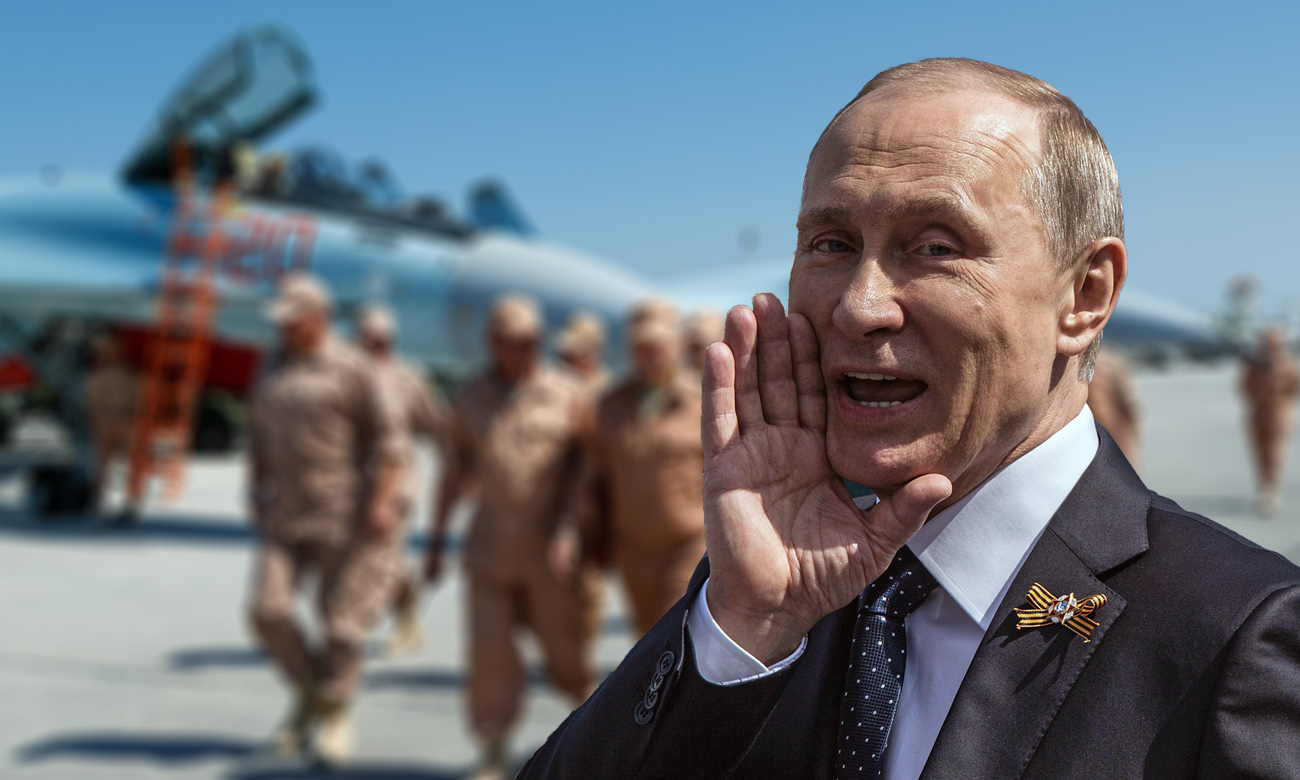






 A
A
A
A
A
A

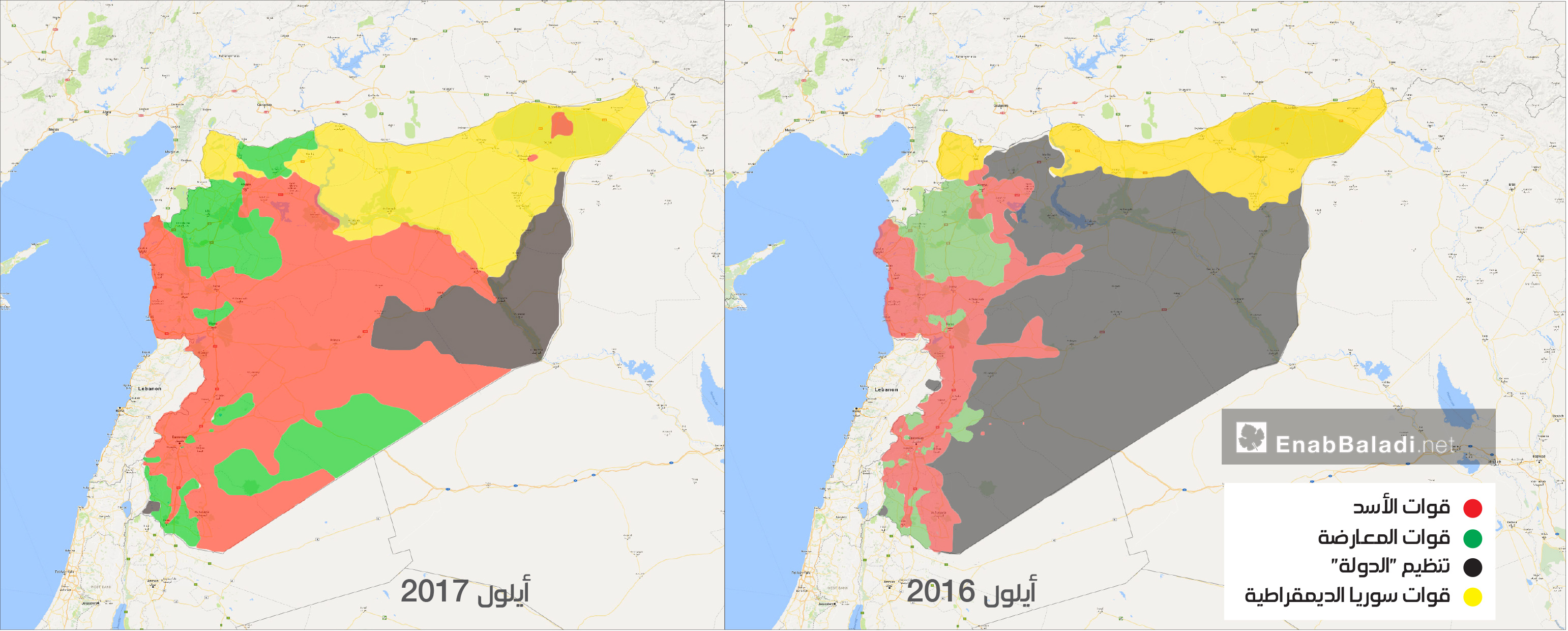


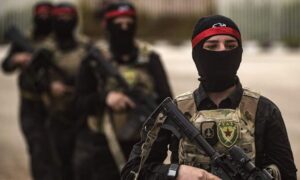
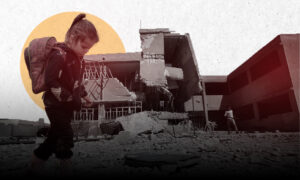
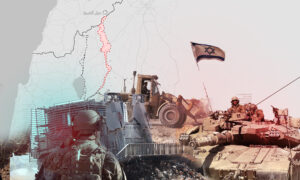
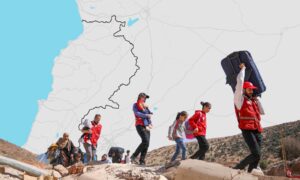
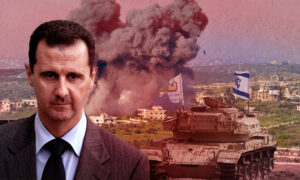
 More In-Depth
More In-Depth